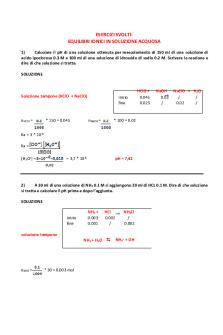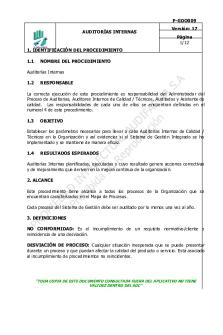Assignment 8 17. (p. 350) sinsemilla PDF

| Title | Assignment 8 17. (p. 350) sinsemilla |
|---|---|
| Course | Food And Culture |
| Institution | LaGuardia Community College |
| Pages | 5 |
| File Size | 56.5 KB |
| File Type | |
| Total Downloads | 28 |
| Total Views | 161 |
Summary
Assignment 8
17. (p. 350) sinsemilla...
Description
Subina Sharma 05/18/20 Assignment 8 17. (p. 350) sinsemilla Cannabis preparations:Ganja, also known as sinsemilla (from the Spanish sin semilla, “without seeds”). Consists of dried flowering tops of plants with pistillate flowers (female plants) which then don’t put their energy into seed production, thus increasing their potency. 18. (p. 352) hashishiyya Hashishiyya – a religious cult that carried out political murders 19. (p. 354) LaGuardia report findings The Laguardia Committee established in 1939, was the first in depth study into the effects of smoking marijuana. The LAGUARDIA REPORT was published in 1944 and is available to read on our college library’s website! The report systematically contradicted claims made about smoking marijuana. No evidence that marijuana use results in insanity, deteriorates physical and mental health, assists in criminal behavior and juvenile delinquency, is physically addictive, and is a “gateway” drug to more dangerous drugs. 20. (p. 356) endogenous substance with marijuana like effects Anandamide: (From ananda, Sanskrit for “bliss”). Endogenous substance isolated from brain tissue with marijuana-like effects. 21. (p. 358) inexperienced vs. experienced marijuana users (reactions) infrequent users:
• Slowed cognitive processing. • Impaired short-term memory. • Impaired inhibitory control. • Loss of sustained concentration or vigilance. • Impaired visuo-spatial processing. frequent users: • Causes less dramatic effects, implying they are tolerant to some (but not all) cognitive effects. • Slowed cognitive processing consistently seen. • Impairment during certain workplace tasks and the operation of machinery and automobiles can have significant effects. 22. (p. 359) consistent cognitive effect of marijuana: Effects on long-term cognitive functioning are mixed • In a decades-long study of more than 1,000 New Zealanders, researchers found that adolescents who used marijuana at least four days per week lost an average of eight IQ points between the ages of 13 and 38 àa pattern not seen among people who began smoking heavily only in adulthood. • Other studies among adults suggest after abstaining for more than a month, regular marijuana use produces few effects on cognition (in other words, “back to normal” after a period of abstinence). 23. (p. 359) Tolerance to marijuana, chronic users Tolerance to many marijuana effects develops after regular use of high levels • Tolerance may not develop uniformly to all effects. Marijuana smoke contains many of the chemicals in tobacco smoke
Benzopyrene, a carcinogen, is found in higher levels in marijuana than in tobacco Tar Carbon monoxide Hydrogen cyanide Nitrosamines • Daily smoking impairs air flow in and out of the lungs. Long-term implications for health are unclear. 24. (p. 362) Institute of Medicine recommendations for medical marijuana use Marijuana is a relatively safe and effective medicine for patients suffering from certain chronic conditions. Use of smoked marijuana should only be allowed for 6 months in certain patients with debilitating, intractable pain or vomiting 25. (p. 365) Amotivational syndrome Amotivational Syndrome: associated with chronic heavy use • Diminished motivation and impaired ability to learn • Probably due to constant intoxication rather than long-lasting changes in brain function • Laboratory studies have not supported this idea 26. (p. 374) early substance used to enhance performance Using substances to enhance performance began with the earliest ancient athletic competitions. • Ancient Greek Olympians and Aztec athletes used plant-based stimulants 27. (p. 376) ergogenic Ergogenic = “energy producing,” a general term for performance enhancement. 28. (p. 377) Dietary supplement was banned by the FDA in 2004
Ephedrine: available in pure form, ephedra extract, or ma huang (FDA banned ephedra & ephedrine in dietary supplements in 2004). 29. (p. 382) side effects of anabolic steroids Anabolic effects (tissue building) Increased muscle mass Control of the distribution of body fat Increased protein synthesis and calcium in the bones Synthetic anabolic steroids • Drug companies synthesized types of steroids that have fewer of the androgenic effects and more of the anabolic effects of steroids • Not entirely free of androgenic effects 30. (p. 385) Omnibus Crime Control Act of 1990 & anabolic steroids 31. (p. 385) Pituitary Giants A pituitary hormone responsible for growth during childhood and puberty • Rare instances of excessive production of HGH produces “giants” over 7 feet tall and the condition usually results in early death. 32. (p. 383) Clenbuterol (history) Clenbuterol is a compound that belongs to a class of drugs called beta2-agonists. Drugs in this category can cause dilation of the bronchial muscles. Beta2-agonists are often used to treat asthma. In addition to being used to treat asthma, clenbuterol has become popular as a weight loss supplement. That’s because of its effect on muscle growth and fat reduction. 33. (p. 386) Creatine A natural substance found in meat and fish. Sold legally as a dietary supplement...
Similar Free PDFs

Assignment #1-ITA 350
- 5 Pages

CMIT 350 Proposal 1 - ASSIGNMENT
- 6 Pages

17 - ASSIGNMENT
- 59 Pages

P.17. Licencia Ambiental Única
- 5 Pages

Assignment 1. A&P
- 6 Pages

MasteringA&P Lab Assignment
- 4 Pages

Assignment 17 Greek Pottery
- 2 Pages

8 Esercizi p H - Appunti 8
- 9 Pages

V-17 P-GDO009 Auditorias Internas-2
- 12 Pages

A&P Ch 17 The Endocrine System
- 18 Pages

Assignment 8
- 2 Pages

Chapter 17 A&P Special senses +lab
- 14 Pages

Assignment 8
- 1 Pages

Assignment 8
- 3 Pages
Popular Institutions
- Tinajero National High School - Annex
- Politeknik Caltex Riau
- Yokohama City University
- SGT University
- University of Al-Qadisiyah
- Divine Word College of Vigan
- Techniek College Rotterdam
- Universidade de Santiago
- Universiti Teknologi MARA Cawangan Johor Kampus Pasir Gudang
- Poltekkes Kemenkes Yogyakarta
- Baguio City National High School
- Colegio san marcos
- preparatoria uno
- Centro de Bachillerato Tecnológico Industrial y de Servicios No. 107
- Dalian Maritime University
- Quang Trung Secondary School
- Colegio Tecnológico en Informática
- Corporación Regional de Educación Superior
- Grupo CEDVA
- Dar Al Uloom University
- Centro de Estudios Preuniversitarios de la Universidad Nacional de Ingeniería
- 上智大学
- Aakash International School, Nuna Majara
- San Felipe Neri Catholic School
- Kang Chiao International School - New Taipei City
- Misamis Occidental National High School
- Institución Educativa Escuela Normal Juan Ladrilleros
- Kolehiyo ng Pantukan
- Batanes State College
- Instituto Continental
- Sekolah Menengah Kejuruan Kesehatan Kaltara (Tarakan)
- Colegio de La Inmaculada Concepcion - Cebu

